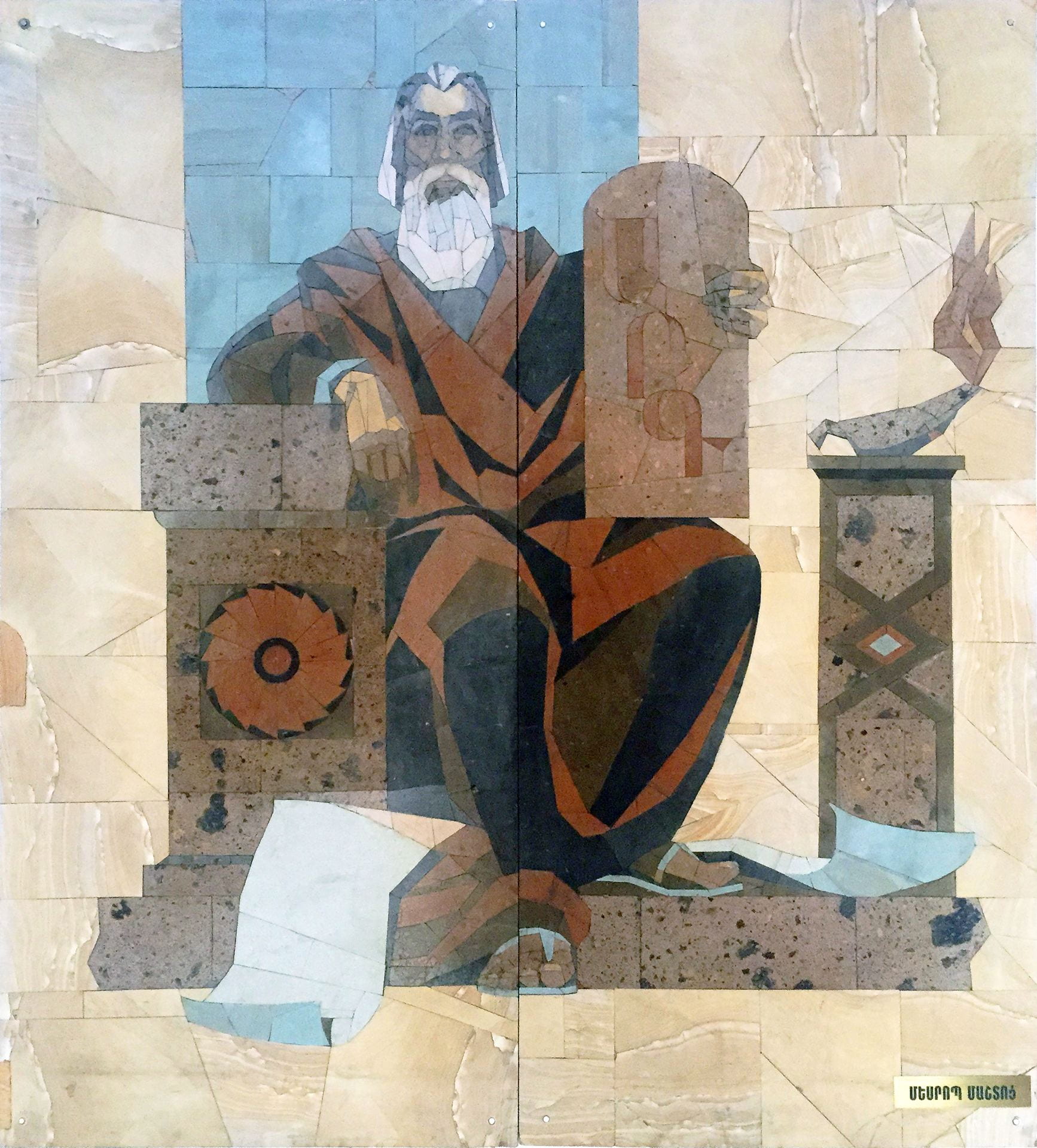
About Armenian Studies at Harvard
“Mesrob Mashdots YSU” by Pandukht on Wikimedia under a CC BY 4.0 license
History
Armenian Studies at Harvard was inaugurated in 1959, when the National Association of Armenian Studies and Research (NAASR) established the first chair of Armenian Studies in the United States and the first Harvard professorship to be endowed by a community organization. The first incumbent was Robert W. Thomson, during whose tenure the position became the Mashdots Chair, named after the celebrated fifth-century saint and inventor of the Armenian alphabet. The second chairholder was James R. Russell, who held the position from 1992 to 2022. Associated faculty have also included Avedis K. Sanjian (1961–1965) and Kevork B. Bardakjian (1974–1987). In 2022, Christina Maranci was appointed the third Mashdots Professor. In her position jointly held between Near Eastern Languages and Civilizations and the History of Art and Architecture, Maranci explores through her teaching and research the visual, material, and built culture of Armenia, ancient to modern, within an interdisciplinary context. Armenian Language and Culture courses are taught by Lisa Gulesserian, Preceptor in Near Eastern Languages and Civilizations.
Partners and Resources
The Armenian Studies program is operated out of Near Eastern Languages and Civilizations; courses and advising in Armenian art are also offered through the History of Art and Architecture.
Partners include faculty in the History of Art and Architecture, the Harvard Divinity School, Dumbarton Oaks, the Davis Center for Russian and Eurasian Studies, the Center for Middle Eastern Studies, Medieval Studies, and the Committee on Byzantine Studies.
Harvard Libraries, including Dumbarton Oaks, hold the most extensive Armenological collection in the United States. These holdings include thousands of Armenian-language titles, as well as Armenian medieval manuscripts and early printed books. With Harvard’s location adjacent to Watertown, one of the oldest diasporan centers of Armenians in North America, local resources for Armenian Studies abound. Those who wish to pursue work in archives and in collections will find several important resources in close proximity: the National Association of Armenian Studies and Research, an academic center; the Armenian Museum and Library of America; Project Save, a photographic archive; the Armenian Cultural Foundation, and many more community organizations, each with their own archives. There are no fewer than five Armenian churches in the immediate area. Neighboring institutions near Harvard (Tufts, Boston University, and Clark University) each have their own endowed chairs in Armenian Studies.
There is an active calendar of events including speakers, often co-sponsored with partners in the Armenian Law Students Association, the Harvard College Armenian Student Association, the Medieval Studies Committee, the Davis Center, and the National Association of Armenian Studies and Research. East of Byzantium, co-run by the Mashdots Professor of Armenian Studies, offers an annual program of lectures and graduate student workshops on the cultures of the Christian East, including Armenia, Georgia, Syria, Persia, Nubia, and the Silk Road.
Curious to hear more about us?
Learn about our academic programs for undergraduate and graduate students.